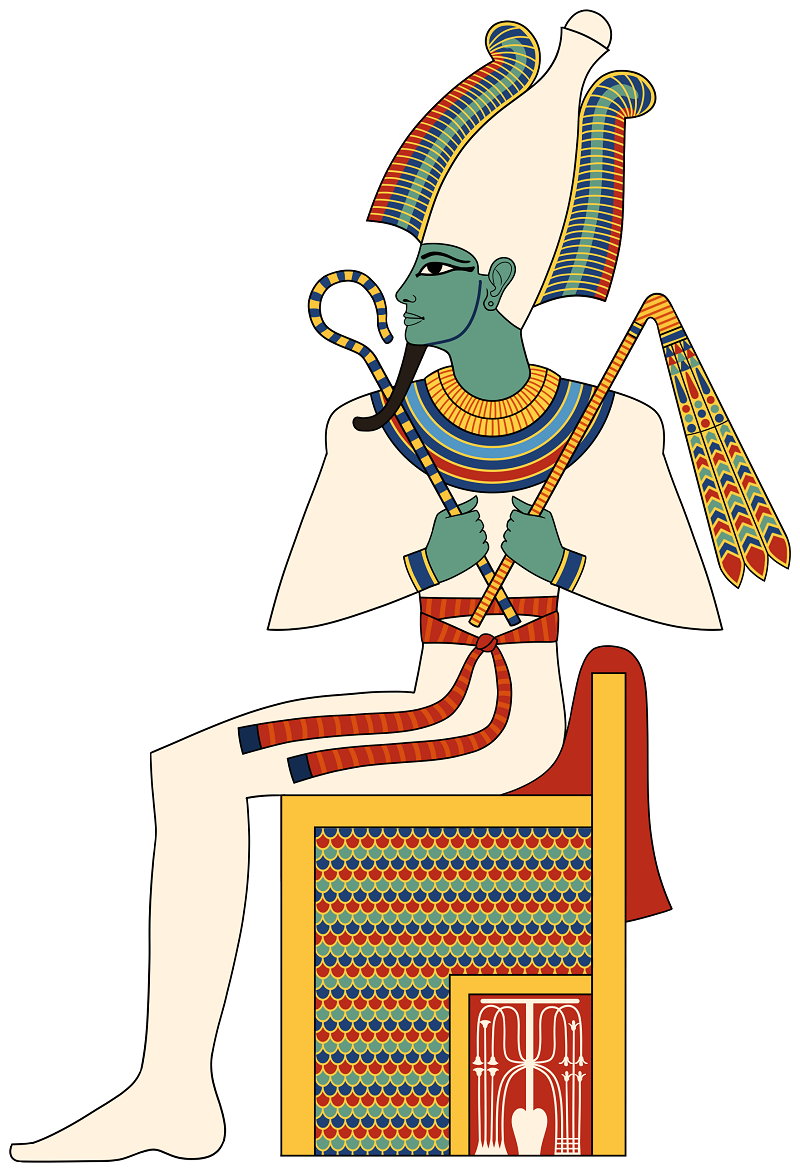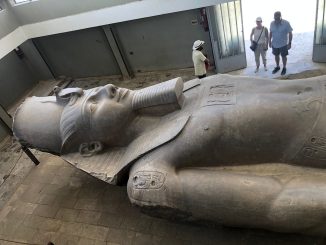At the core of Osiris’ worship lies a compelling mythos of death and renewal. Legend tells of his murder by jealous Set, followed by his resurrection by devoted Isis, symbolizing the eternal cycle of life. This narrative, preserved in ancient texts like the Pyramid Texts, highlights Osiris’ benevolent guidance of souls in the afterlife. Archaeological findings and textual analysis continually illuminate the depths of Osiris’ mythos, offering insights into ancient Egyptian spirituality.
Decoding the Divine: Exploring Osiris’ Symbolism” delves into the rich iconography surrounding the ancient Egyptian deity. With green skin symbolizing fertility and the Djed pillar representing stability, each symbol unveils Osiris’ multifaceted role in Egyptian cosmology.
In the vast tapestry of ancient Egyptian mythology, few figures loom as large as Osiris. Revered as the god of the afterlife, death, and resurrection, Osiris has captivated the imaginations of scholars, historians, and archaeologists for centuries. Yet, despite the wealth of knowledge surrounding this enigmatic deity, one aspect continues to elude us: the physical manifestation Osiris might have taken. Through the lens of archaeology, we embark on a journey to unravel the mysteries surrounding Osiris and explore the potential forms this revered god may have assumed.

Unearthing the Past
Archaeological Discoveries Archaeology serves as our window into the past, offering tantalizing glimpses of ancient civilizations and their belief systems. Across the fertile lands of Egypt, excavations have yielded a treasure trove of artifacts shedding light on the worship of Osiris. Temples dedicated to the god, adorned with intricate hieroglyphics and vibrant murals, provide invaluable insights into the rituals and ceremonies associated with Osiris. Within these sacred spaces, depictions of Osiris abound, often portrayed as a regal figure adorned in the traditional regalia of ancient Egyptian royalty – the white crown of Upper Egypt, the red crown of Lower Egypt, and the iconic crook and flail symbolizing king ship and authority.

Iconography and Symbolism
The Osirian Mythos
At the core of Osiris’ worship lies a compelling mythos of death and renewal. Legend tells of his murder by jealous Set, followed by his resurrection by devoted Isis, symbolizing the eternal cycle of life. This narrative, preserved in ancient texts like the Pyramid Texts, highlights Osiris’ benevolent guidance of souls in the afterlife. Archaeological findings and textual analysis continually illuminate the depths of Osiris’ mythos, offering insights into ancient Egyptian spirituality.

The Eternal Legacy of Osiris
Influence and Reverence Despite the passage of millennia, the legacy of Osiris endures, permeating both ancient and modern cultures alike. From the majestic temples of ancient Egypt to the hallowed halls of contemporary museums, Osiris remains a ubiquitous presence, revered for his role as a harbinger of life beyond death. The enduring fascination with Osiris speaks to the timeless allure of his mythos, offering solace and hope to countless generations grappling with the mysteries of mortality. As archaeologists continue to unearth new discoveries and insights into the worship of Osiris, the legacy of this divine deity continues to evolve, inspiring awe and reverence in all who encounter his divine presence.
Conclusion
In the annals of human history, few figures command the reverence and fascination evoked by Osiris, the god of the afterlife and resurrection. Through the lens of archaeology, we glimpse the myriad forms and symbols through which Osiris was venerated by the ancient Egyptians. From the sacred temples adorned with his likeness to the timeless myths that recount his divine deeds, Osiris continues to captivate our imagination, inviting us to ponder the mysteries of life, death, and the eternal journey of the soul. As we delve deeper into the enigmatic world of Osiris, we are reminded of the enduring power of myth and the timeless quest for transcendence that unites humanity across the ages.




